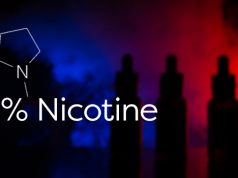Recent findings from a survey by the U.S. Centers for Disease Control and Prevention (CDC) survey indicate a decline in marijuana use among high school students over the past decade, despite the legalization of cannabis in many states. Conducted every two years, the survey covers various topics, including substance use and mental health.
In 2023, 17% of high school students reported using marijuana in the past month, down from 23% in 2013. Male students showed a significant decrease in marijuana use, from 25% in 2013 to 15% in 2023, while female students saw a smaller decline from 22% to 19%. The survey indicated a slight increase in marijuana use from 2021 to 2023, but this was not considered significant.
Prohibition is a recipe for disaster
The overall decline contradicts the concerns of legalization opponents, who feared that legalizing marijuana would increase youth usage. In fact, addiction experts have long highlighted that sensible regulations are the key to reducing substance abuse of any kind. Prohibition actually has the opposite effect than the one desired, as it sends banned products underground to the black market where they are available to everyone, whilst being unregulated and therefore possibly unsafe.
Meanwhile the CDC report underscored the need for ongoing efforts to reduce substance use among youth, particularly focusing on female and LGBTQ+ students, who have been found to be more likely to engage in these behaviours. The document also mentioned that alcohol use among teens also declined from 35% in 2013 to 22% in 2023.
The CDC findings support the broader research consensus that legalizing cannabis does not lead to an increase in use, with several studies showing either stable or declining trends in youth marijuana consumption post-legalization. In fact, previous research had indicated a decline in use in a number of states, including Colorado and Washington following cannabis legalization.
Changes in substance use patterns in Nordic countries
In other news, the latest findings from the European School Survey Project on Alcohol and Other Drugs (ESPAD) reveal significant shifts in substance use among Finnish ninth graders. The survey revealed that while the use of vaping products and nicotine pouches is on the rise, traditional alcohol and tobacco use continues to decline.
Experimentation with vapes has increased, with 40% of teens having tried them, up from 34% in 2019. While nicotine pouch use has surged since sales restrictions were lifted in 2023, with 31% of boys and 17% of girls having tried them. Meanwhile daily smoking has dropped, from 20% at the beginning of the decade to around 6% of boys and 4% of girls currently.
In the meantime, the decline in binge drinking has somewhat stalled, with 9% of boys and 6% of girls still engaging in heavy episodic drinking, however, the number of ninth graders who have never consumed alcohol has risen from 10% in 1995 to 35% in 2024. Cannabis experimentation has also decreased slightly, with 11% of boys and 9% of girls trying it in 2024, down from 13% and 9% in 2019.
Young people seem to consider cigarettes as vapes’ dirty cousins
Similar trends of substance use are being observed in other countries, including neighbours Norway and Sweden, where reduced smoking rates have been linked to the increased use of vaping products. These findings are supported by countless other studies and real-world data, all showing that as vaping becomes more widespread, the perceived risks of traditional smoking increase, deterring youth from starting to smoke.
“Smoking is old school,” said 19 year old Michela, a University Student from Malta. “It is way more harmful, it stinks, you get yellow teeth and fingers, and you have to carry more stuff around. A vape is easier to carry, smells nice and you get the same nicotine hit without the bad stuff in cigarettes,” she added. Many young people seem to agree.
Whether it is due to changing attitudes towards substance use, or because the nicotine in vapes is satisfying enough, one cannot deny that the shift to vaping seems to have correlated with a general decrease in use of other substances, such as cigarettes, alcohol and illicit drugs. Given the proven relative safety of the products, this should certainly be considered a positive strive forward for public health.












